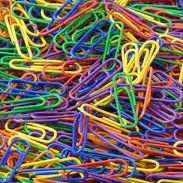The type of semiconductive nanocrystals known as quantum dots are both expanding the forefront of pure science and also hard at work in practical applications including lasers, quantum QLED televisions and displays, solar cells, medical devices, and other electronics.
A new technique for growing these microscopic crystals, published this week in Science, has not only found a new, more efficient way to build a useful type of quantum dot, but also opened up a whole group of novel chemical materials for future researchers’ exploration.
[…]
by replacing the organic solvents typically used to create nanocrystals with molten salt — literally superheated sodium chloride of the type sprinkled on baked potatoes.
“Sodium chloride is not a liquid in your mind, but assume you heat it to such a crazy temperature that it becomes a liquid. It looks like liquid. It has similar viscosity as water. It’s colorless. The only problem was that nobody ever considered these liquids as media for colloidal synthesis,”
[…]
much of the previous research on quantum dots, including the Nobel work, was around dots grown using combinations of elements from the second and sixth groups on the periodic table, Rabani said. These are called “II-VI” (two-six) materials.
More promising materials for quantum dots can be found elsewhere on the periodic table.
Materials found in the third and fifth groups of the periodic table (III-V materials) are used in the most efficient solar cells, brightest LEDs, most powerful semiconductor lasers, and fastest electronic devices. They would potentially make great quantum dots, but, with few exceptions, it was impossible to use them to grow nanocrystals in solution. The temperatures required to make these materials were too high for any known organic solvent.
Molten salt can handle the heat, making these previously inaccessible materials accessible.
[…]
One of the reasons researchers synthesizing nanocrystals overlooked molten salt was because of its strong polarity, said UChicago graduate student Zirui Zhou, second author of the new paper.
Salt’s positively charged ions and negatively charged ions have a strong pull toward each other. Small things like nanocrystals have small surface charges, so researchers assumed the charge would be too weak to push back as salt’s ions pull in. Any growing crystals would be crushed before they could form a stable material.
Or so previous researchers thought.
“It’s a surprising observation,” Zhou said. “This is very contradictory to what scientists traditionally think about these systems.”
The new technique can mean new building blocks for better, faster quantum and classical computers, but for many on the research team, the truly exciting part is opening up new materials for study.
[…]
Source: Researchers unlock a ‘new synthetic frontier’ for quantum dots | ScienceDaily

Robin Edgar
Organisational Structures | Technology and Science | Military, IT and Lifestyle consultancy | Social, Broadcast & Cross Media | Flying aircraft
